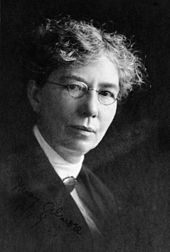 Born in 1865 in New South Wales, Dame Mary Gilmore was a socialist first and then a poet, and is one of the few Australians to have featured on their monetary system. The oldest born to a Scottish farmer and an Australian mother with roots in Ireland, she attended public school before the family moved to Downside. At school there, she spent half her time as a pupil and the other part actually teaching.
Born in 1865 in New South Wales, Dame Mary Gilmore was a socialist first and then a poet, and is one of the few Australians to have featured on their monetary system. The oldest born to a Scottish farmer and an Australian mother with roots in Ireland, she attended public school before the family moved to Downside. At school there, she spent half her time as a pupil and the other part actually teaching.
After passing the teaching examination, she worked in various locations including Silverton where she began to develop strong socialist ideals and experimented with writing poetry. In 1895 she left teaching to embark on a trip to the Cosme settlement that had begun in Paraguay, marrying William Gilmore whilst she was there. A few years later they left the colony and traveled first to Patagonia and then England before returning to Australia.
Whilst she lived in Victoria with her family, she corresponded with Alfred Stephens who worked on The Bulletin, one of the premier literary papers of Australia, and some of her early work was featured in the Red Pages. In 1908 she began to write the Women’s Page of socialist paper the Australian Worker and would continue to do so for the next 23 years.
Her first collection of poetry was published in 1910. Marri’d and other Verses had been written partly during her time at the Cosme colony in Paraguay and when she had returned to Australia. It began her career as one the county’s most influential and widely read poets as she appealed to everyday people with her verses about the vagaries of normal life.

Whilst they never lost their love for each other, Mary Gilmore and her husband went their separate ways in 1912, she moving to Sidney with their only son, and he going to work on a farm in Queensland with his brother. Now Gilmore could devote more time to her literary activities and it produced a period of prolific activity that would last for many years.
Her view on the horror of the World War was explored in her second collection of poetry, The Passionate Heart, in 1918, particularly the debacle that was Gallipoli. In 1922 she published her first work of prose in a series of essays under the title Hound of the Road and a third poetry book called The Tilted Cart a few years later. Now approaching her sixties, though, Gilmore began to suffer from poor health which forced her to resign from the Australian Worker.
One of her most important works was published in 1931, The Wild Swan, which drilled into the unfair way aborigines were treated by the white population, particularly in how their old lore was being systematically destroyed. She continued to campaign for rights for all, particularly for aboriginal equality and the poor lot of returning servicemen who had fought in the First World War.

Gilmore was a highly vocal and much loved voice in Australia, and her birthdays were often celebrated, not just by the literary community but normal, everyday folk who liked what she said. She died in 1962 at the grand old age of 97 and was given one of the first state funerals for a writer since 1922.

